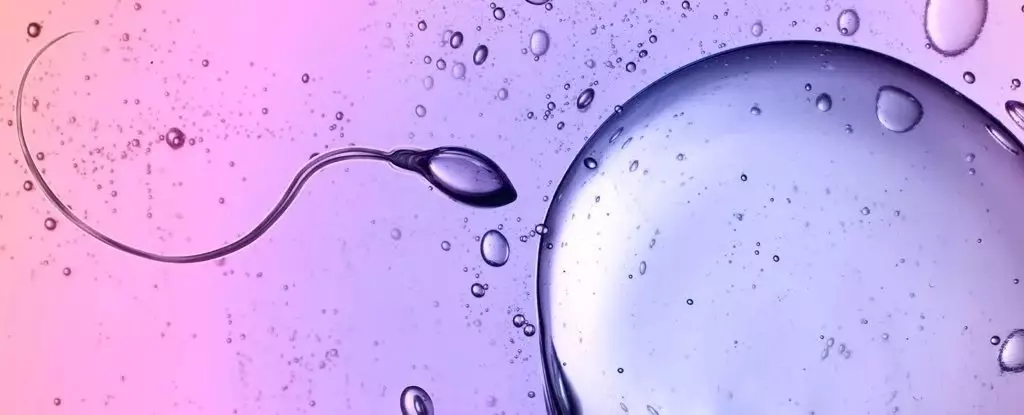The world of microscopic organisms often feels like a hidden realm beneath the surface of our understanding, weaving through the very fabric of classical physics with graceful defiance. Recent research led by Kenta Ishimoto and his team at Kyoto University throws a wrench into our traditional Newtonian framework by exploring the remarkable swimming abilities of human sperm in viscous fluids. This exploration isn’t just an academic inquiry; it casts shadows on the reliability of centuries-old physics, revealing the limitations of Newton’s laws when faced with the complexities of biological locomotion.
Newton’s third law of motion—where every action has an equal and opposite reaction—provides foundational principles that have defined physics for generations. Yet, when we examine the tumultuous interactions of microscopic swimmers, such as spermatozoa and green algae, this edict becomes a mere guideline rather than an unbreakable rule. The findings challenge not only physics but also our perception of biological efficiency. If microscopic entities can glide effortlessly through seemingly resistant mediums, can we unequivocally trust the laws that govern our larger reality?
Freewheeling through Viscosity
Sperm cells might be small, but their ability to navigate high-viscosity environments is monumental—akin to a small craft maneuvering through a thick fog. The research reveals that these cells utilize an ‘odd elasticity’ in their flagella (the tail-like appendages that propel them), enabling superior movement amidst resistance. This phenomenon is revolutionary. Where classical physics would predict a diminutive response to energy output, sperm cells exhibit unexpected resilience and responsiveness.
The elasticity that Ishimoto’s team refers to allows flagella to bend, twist, and propel cells forward without losing a substantial amount of energy to the fluids they traverse. This contradiction to basic physics raises an intriguing question: what other biological phenomena exist that may be governed by entirely different principles? The implications extend beyond mere cellular biology—they challenge the very foundation of motion and energy conservation as we apply it to complex systems, urging us to reconsider our assumptions about movement and resistance.
Beyond Innate Limits: The Odd Elastic Modulus
The research didn’t rest on merely identifying the odd elasticity; it ventured further into uncharted territory by introducing the concept of the ‘odd elastic modulus.’ This fundamental property characterizes how flagella behave internally and reinforces the diverging path of biological entities from classical mechanics. This exploration of how organic materials interact with their environment defies simple categorization and invites a deeper scrutiny into the collective behavior of living systems.
In developing mathematical models around the dynamics of swimming sperm and Chlamydomonas algae, Ishimoto and his colleagues highlight a fascinating synergy between form and function. The wave-like motion of flagella, previously mysterious, can now be articulated through these new principles. Is this discovery hallmarks of an emerging era in biological research? One where the wonders of the microscopic world serve as blueprints for innovative technological design, urging engineers to craft robots that mimic these natural movements? This cross-disciplinary conception evokes thrilling possibilities for the future of biomimicry.
Implications for Technology and Ecology
The insights gained from studying sperm motility and algal movement stretch far beyond academic curiosity. They unearth practical applications that could revolutionize fields ranging from robotics to environmental science. Imagine self-assembling robots that can navigate and manipulate their environments with the flexibility and efficiency of living organisms. The integration of biological principles into machinery could yield devices capable of performing intricate tasks in challenging terrains, be it search-and-rescue missions or environmental monitoring in hostile conditions.
Moreover, the exploration of these biological systems offers crucial contributions to ecological understanding. By examining how these organisms operate under various forces, we gain insights into habitat adaptations and the resiliency of life. This knowledge can inform efforts to preserve diverse ecosystems facing the blistering changes of climate disruption.
The study of sperm motion not only dismantles the stringent confines of Newtonian physics but also garners an appreciation for the remarkable intricacies of life. It beckons us to re-evaluate entrenched scientific tenets and embrace a more dynamic, interdisciplinary approach in both science and technology. The mysteries of microscopic life could be key to unlocking our understanding of movement, energy, and resilience in an increasingly complex world.


Leave a Reply